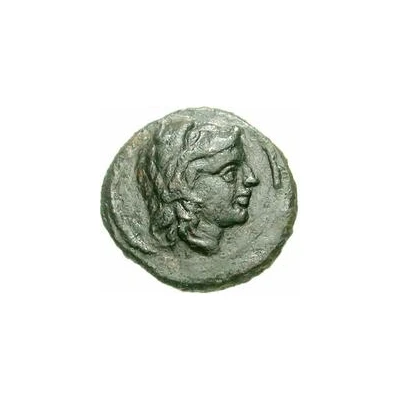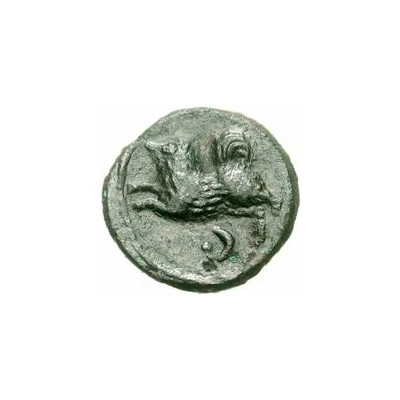


© Classical Numismatic Group, Inc.
½ Unit Æ 14 208 BC - 207 BC
| Bronze | 2.02 g | 14 mm |
| Issuer | Arretium (Etruria) |
|---|---|
| Type | Standard circulation coin |
| Years | 208 BC - 207 BC |
| Composition | Bronze |
| Weight | 2.02 g |
| Diameter | 14 mm |
| Shape | Round (irregular) |
| Technique | Hammered |
| Orientation | Coin alignment ↑↓ |
| Demonetized | Yes |
| Updated | 2024-10-09 |
| Numista | N#101987 |
|---|---|
| Rarity index | 94% |
Reverse
Dog running left with letter below.
Lettering: C
Edge
Plain
Comment
This type is listed as being from an uncertain Etruscan mint; however, some sources tend to agree that this is equivalent to half the denomination of the African head / Elephant type, listed as being from Arretium. If that type is actually from Arretium, this type more than likely is as well.While this type is typically listed as being struck from 301-250 BC, if this is related to the Arretium issue, it would have actually been struck during the Second Punic War (218-201 BC), from 208-207 BC.
When the exact denomination of a bronze coin is not known, the denomination is listed as "Æ" (AE), followed by its diameter.
An example with letter M:
© Classical Numismatic Group, Inc.
Interesting fact
One interesting fact about this coin is that it features a unique blend of Etruscan and Roman elements. The obverse side of the coin depicts a helmeted head of the Etruscan goddess Hathor, while the reverse side features a Roman-style wreath surrounding the Etruscan symbol of the "thyrsus," which was a staff topped with a pine cone and used in religious rituals. This blending of cultural influences reflects the complex history of the region and the interactions between the Etruscans and the Romans during this time period.